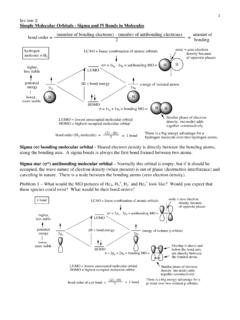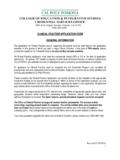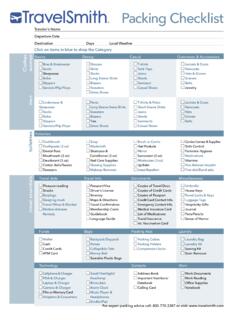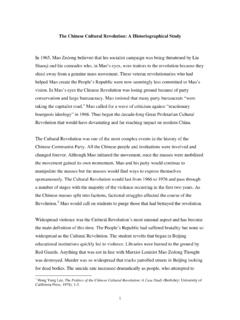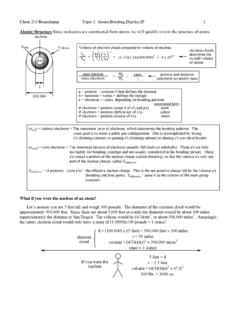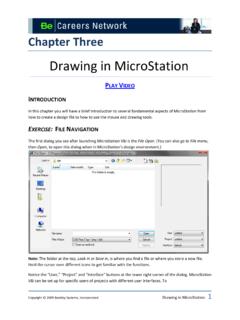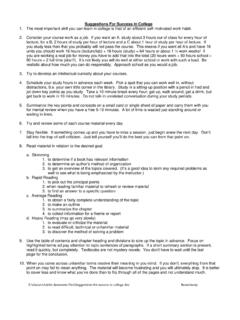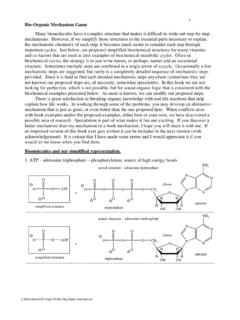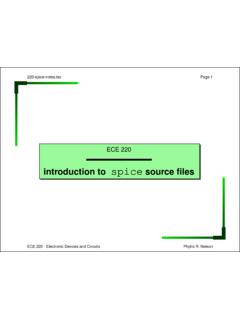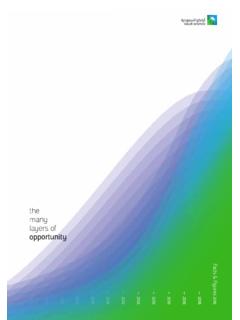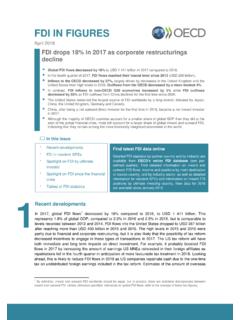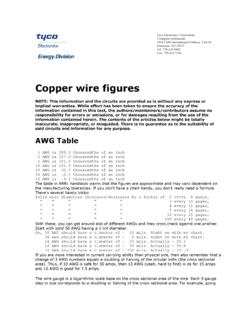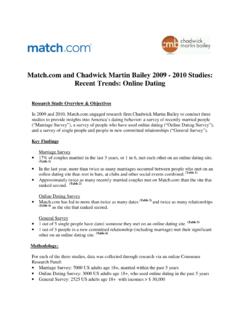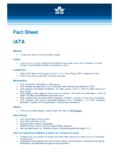Transcription of Chapter 1 Lecture Notes Significant Figures and …
1 1 Chapter 1 Lecture Notes Significant Figures and Calculations Significant Figures Some instruments are capable of measuring with greater reliability than others. When making a measurement, it is important to represent that measurement to the correct degree of uncertainty. The digits that are known with certainty plus an additional digit that contains some uncertainty (estimated) are referred to as the " Significant Figures " ("sig figs") in the measurement. What temperature is indicated on the thermometer in the figure?
2 A. 33 oC b. 32oC c. d. e. no correct answer How many sig figs are written in the measurement? a. 1 b. 2 c. 3 d. 4 e. no correct answer How many digits are known with certainty? How many are estimated? a. 1 and 1 b. 1 and 2 c. 2 and 1 d. 2 and 2 e. no correct answer How many sig figs are present in the following values, assuming that they are measured values? (Units have been omitted, but could be grams (g), liters (L), centimeters (cm), etc.)
3 , rules are provided on page 18-19) a. 1 b. 2 c. 3 d. 4 e. no correct answer a. 1 b. 2 c. 3 d. 4 e. no correct answer a. 1 b. 2 c. 3 d. 4 e. no correct answer 500 a. 1 b. 2 c. 3 d. 4 e. no correct answer x 102a. 1 b. 2 c. 3 d. 4 e. no correct answer x 102a. 1 b. 2 c. 3 d. 4 e. no correct answer Rounding To obtain the correct number of sig figs, it is often necessary to "round off" a value ( , from the many "extra" digits on a calculator screen).
4 Some of the rules are as follows: If the digit following the last Significant figure is 1, 2, 3, or 4, then round "down." If the digit following the last Significant figure is 6, 7, 8, or 9, then round "up." 2 If the digit following the last Significant figure is a 5 (with no other non-zero digits after the 5), round down if the last sig fig is even and round up if the last sig fig is odd. The rule about "5 s" is necessary to avoid statistical bias in your calculations. Statistically speaking, you round down 4 out of 9 times ( , 1, 2, 3, 4) and round up 4 out of 9 times ( , 6, 7, 8, 9).
5 1 2 3 4 5 6 7 8 9these 4 digets round downthese 4 digets round round to two sig figs = round to two sig figs = _____ Note that this rule only applies when there are no other non-zero digits following the "5". If there is anything other than a zero after the "5", then the number must be rounded up. This follows the same logic as above, but on a larger "number line." 1 2 3 .. 47 48 49 50 51 52 .. 97 98 99these 49 digets round round to two sig figs = round to two sig figs = _____these 49 digets round up When the only non-zero digit following the last Significant figure is a 5, it is necessary to round down half of the time and round up half of the time.
6 Round to two sig figs = round to two sig figs = _____ 3 Round the following numbers to three sig figs. a. b. c. no correct answer a. b. c. no correct answer a. b. c. no correct answer a. b. c. no correct answer a. b. c. no correct answer a. b. c. no correct answer a. b. c. no correct answer Calculations Significant Figures in Calculations: There are two different rules that must be applied for determining the proper number of sig figs in the result of a calculation , depending on whether the calculation involves multiplication/division or addition/subtraction.
7 Multiplication/Division: only as many sig figs in the answer as the factor with the least sig figs How many Significant Figures should be used in the answer below (assuming measured values)? x 2 sig figs b. 3 sig figs c. 4 sig figs d. no correct answer Addition/Subtraction: only as many digits to the right of the decimal point in the answer as the factor with the least digits to the right of the decimal point How many Significant Figures should be used in the answers below (assuming measured values)?
8 A. ( ) + ( ) - ( ) = 1 sig figs b. 2 sig figs c. 3 sig figs d. 4 sig figs e. 5 sig figs 4 b. 3 sig figs b. 4 sig figs c. 5 sig figs d. 6 sig figs e. 7 sig figs+ Scientific or Exponential Notation Very large and very small numbers (and normal size numbers too) are often written as a coefficient between and times a power of 10. This works well to show the actual number of Significant Figures too. When a problem is set up with all numbers in this notation it is often easy to mentally estimate a ballpark figure to check your answer.
9 X x x 101 Dimensional Analysis: One way to approach many of the required calculations is to use "dimensional analysis". In dimensional analysis, the units of a known quantity are transformed into the units of the desired quantity through a series of "conversion factors." Start with a quantity that has been given in the problem. Systematically convert from the starting units to the desired units. Units cancel when they are on the opposite sides of (above and below) the division line. Fundamental SI units of measure Mass kilograms kg Length meter m Temperature Kelvin K Amount of substance mole mol Time second s Electrical current
10 Ampere A Luminous intensity candela cd 5 Mixing units is a common feature. You will use mix units in your second lab when you determine density (g/ml or g/cm3). Determine the density of milk in grams/mL. One gallon of mile weighs pounds. The average cow produces 53 pounds of milk a day. How many gallons does she produce each day? Prefixes for large/small amounts Large amounts giga G 109 = 1,000,000,000mega M 106 = 1,000,000kilo k 103 = 1.
